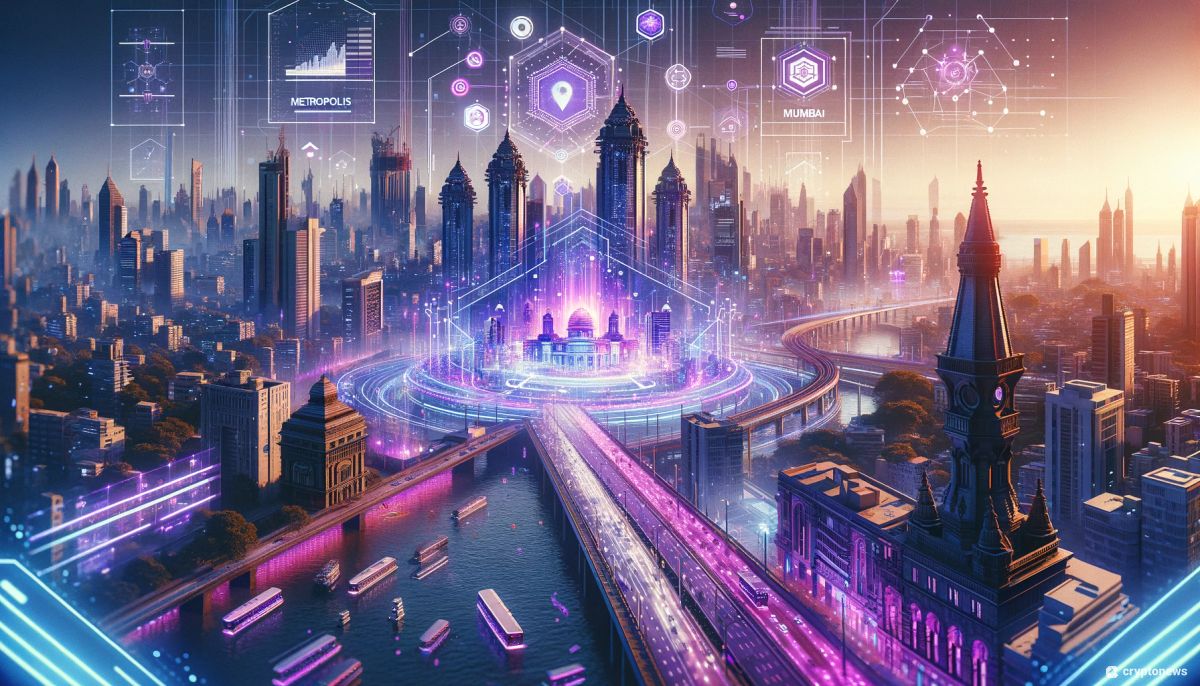Mumbai Launches Metropolis Metaverse to Showcase Infrastructure Projects

Mumbai, the bustling financial hub of India, has introduced a metaverse initiative aimed at showcasing its latest and upcoming city-wide infrastructure megaprojects.
Dubbed the Mumbai Metropolis Metaverse, this platform offers users a captivating 3D and virtual reality (VR) experience, enabling them to explore various development initiatives across Mumbai and its neighboring cities.
Mumbai Metropolis Metaverse Unveiled: A Glimpse into the Future of Mumbai
On February 19, Maharashtra Deputy Chief Minister Devendra Fadnavis unveiled the initiative aimed at transforming Mumbai into a global city of dreams by 2025.
Mumbai Metropolis Metaverse offers an immersive virtual representation of Mumbai, providing residents and enthusiasts with a glimpse into the city’s future development and the new amenities it will offer.
The launch of the metaverse marks a move towards transparency and citizen engagement, allowing residents and global users alike to delve into the city’s transformative urban projects from the comfort of their homes.
Dear Mumbaikars and Lovers of Mumbai,
Just click on these links to see how Mumbai is all set to transform within next few years, rather within few months!
Come, join this once in a lifetime journey called ‘Transformation’!
Mumbai Metropolis Metaverse! https://t.co/HulmPEhZNR…— Devendra Fadnavis (@Dev_Fadnavis) February 19, 2024
Talking on social media platform X, Fadnavis invited Mumbaikars and lovers of Mumbai to explore the metaverse and witness the city’s imminent transformation firsthand.
Through this 3D map, the government aims to showcase upcoming projects and initiatives that will reshape the Mumbai Metropolitan Region (MMR) in the years to come.
Among the key projects featured in the metaverse are the Mumbai Ahmedabad Bullet Train Corridor, Mumbai Metro expansion, Coastal Road development, Dharavi Project, Mumbai Port Trust redevelopment, Mumbai Trans Harbour Link (Atal Setu), Elevated Metro Lines, Airoli-Katai Tunnel Road, Virar-Alibagh Multimodal Corridor, Waste-water Treatment Plants, and the Navi Mumbai International Airport.
The projects featured in the metaverse also include the recently inaugurated roads constructed over the Arabian Sea, aimed at easing traffic congestion, enhancing connectivity, and promoting cleaner air.
Additionally, the platform showcases other ambitious infrastructure ventures, including underground and undersea tunnels designed to streamline intra-city travel.
The Mumbai Metropolis Metaverse promises to serve as a valuable tool for citizens to virtually monitor the progress of key megaprojects that directly impact their daily lives.
Accessible via both web browsers and dedicated mobile apps available on the Google Play Store and Apple App Store, the metaverse offers an interactive and immersive interface for users to explore.
Maharashtra Government Aims to Transform Mumbai’s Mobility
Earlier in the day, Fadnavis claimed Mumbai would be ahead of Bengaluru, Delhi, and other cities in terms of mobility, expressing that the government is trying its best to ensure people traveling in Mumbai can reach any destination within 59 minutes. Fadnavis said:
“Mobility-wise Mumbai will be an entirely different city in the next five years. It will be ahead of every other city; it will be ahead of Bengaluru, Hyderabad, Delhi, and Chennai.”
In parallel with the state government’s metaverse venture, the Reserve Bank of India (RBI), India’s central bank, has announced plans to explore offline solutions to facilitate the adoption of its central bank digital currency (CBDC), the digital rupee, in remote areas with limited internet connectivity.
During a Monetary Policy Committee review meeting on February 8th, RBI Governor Shaktikanta Das unveiled proposals to introduce offline functionality in CBDC-R, enabling transactions in regions with poor or restricted internet access.
“It is proposed to introduce offline functionality in CBDC-R to enable transactions in areas with poor or limited internet connectivity. These functionalities will be slowly introduced through the pilots.”
The RBI’s plans for an offline CBDC were initially mooted in March 2023, with the aim of testing its potential for cross-border transactions and integration with existing legacy systems.
In September, the RBI collaborated with some of the prominent financial institutions to introduce innovative features on the digital rupee.
The move aimed to popularize CBDC and boost retail CBDC transactions in India. Some of the features include offline CBDC transactions and linking CBDCs to India’s widely used Unified Payments Interface (UPI).




